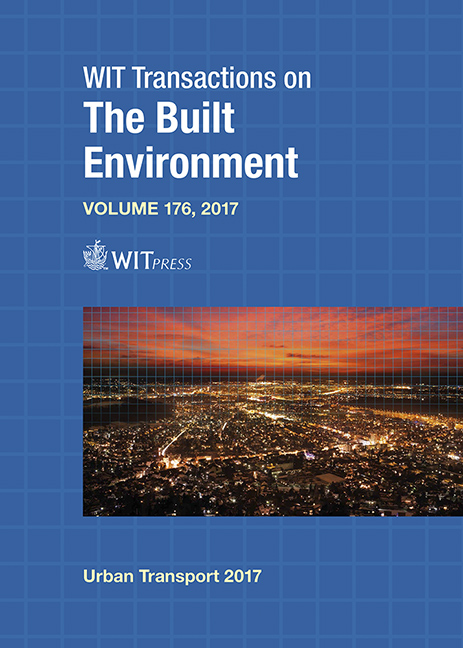SPATIAL RELATIONSHIPS BETWEEN MOBILITY OPPORTUNITIES AND CONSTRAINTS OF TRANSPORT DISADVANTAGES: THE CASE OF SANTIAGO DE CALI, COLOMBIA
Price
Free (open access)
Transaction
Volume
176
Pages
11
Page Range
119 - 129
Published
2017
Size
697 kb
Paper DOI
10.2495/UT170111
Copyright
WIT Press
Author(s)
ALEJANDRO L. GRINDLAY, CIRO JARAMILLO, CARMEN LIZÁRRAGA
Abstract
The objective of this paper is to explore the spatial distribution of the mobility opportunities linked to the access of the population to the public transport system and its transport disadvantages constraints in relation to socio-economic variables of the districts and estimated local public transport needs. It focuses on the third most populated urban area in Colombia, the metropolitan area of Santiago de Cali. The analysis uses and correlates two spatialized indexes. The index of social transport needs and the index of public transport provision are calculated, both in absolute and relative terms. A statistical analysis has been made, and a spatial analysis of distribution in term of standard deviation. Both indexes were contrasted in absolute and relative terms, and they were spatially studied in a cartography that showed the balance between supply and need in each zone. Lastly, correlation coefficients such as Pearson and Spearman were calculated along with levels of significance to validate the results. The results revealed that distribution of the indexes, the absolute transport social needs and the relative public transport provision, presents a normal distribution, in contrast to the other two indicators. Regarding the standard deviation maps, the distribution of the values below the average is shown to be the majority in the case of the relative index of public transport provision on the periphery of the study area. On the other hand, the spatial distribution of the absolute and relative index of transport social needs in the central areas is below or at the average of the study area. It can be concluded that the opportunities for access to the public transport system are relatively less concentrated in disadvantaged districts with low socio-economic levels.
Keywords
public transport provision, mobility opportunities, transport disadvantages, transport social needs, Santiago de Cali, Colombia





